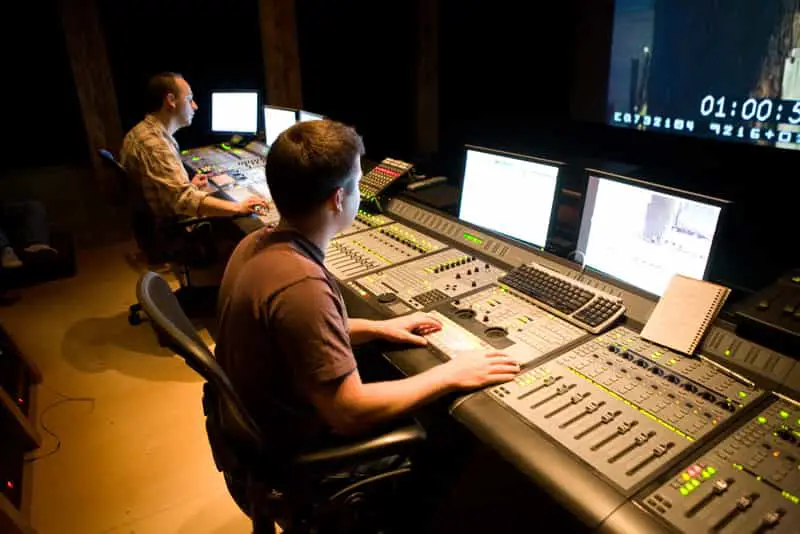A foley mixer adds sounds to film and TV footage during the post-production stage between filming and editing. Professional foley mixers work with foley artists and a foley editor. But for shorts and no-budget projects you’ll probably mix foley along with all other sound tasks.
Foley Mixing
Cinema Sound Foley Library “How To Mix Foley” by YouTube Channel Cinema_Sound shows you the processes in action as foley mixing takes place.
Press the white arrow in the centre of the video thumbnail to hear Mark Edward Lewis explain the art of foley mixing. With three decades of writing and producing musical scores, re-recording mixing, and developing sound design, he’s an expert in sound production. Cinema Sound has a great foley library.
When Does Foley Mixing Happen?
Foley mixing is part of post production, so comes after filming ends. But it also waits until after the dialogue and ambient sound has been done. Foley sounds are cued low in the mix. Good foley is realistic but not intrusive on dialogue or the ambient sound of the scene.
“Foley is the MAIN ELEMENT for immersing viewers into the human experience and requires it be mixed for subconscious hearing”
Cinema Sound
What does a Foley Mixer do?
A foley mixer carefully sets the audio levels of each foley sound. It can’t be too loud for the scene. Also, the sound level must be right for the distance between the actor and the camera.
Distance to camera mixing is important. The distance affects not just the volume level of the foley sounds. In close ups, for example, more bass frequencies and high frequencies are needed. The further away an actor is from the camera, the fewer the bass and high frequencies are needed. Replace them with mid frequencies.
Foley sounds aren’t just used from recording but need editing. High and low frequencies are brought down so you feel you are in the room with the actors on screen.
A foley mixer should add the foley sounds so quietly they are immersed into the scene. It’s there to make the scene realistic, not to draw audience attention away to the sound.
Foley should follow the dialogue. So the sounds come from the same direction as the action and move with the characters on screen.
It’s the same for the reverb, which is usually recorded during filming. Now it’s mixed with the foley and other sounds. Mark believes strongly that the foley reverb is the only reverb that should ever be put in the centre – “if you dare” – and would prefer it if you didn’t. Whereas the foley goes wherever the actors are.
Find out more
The Cinema_Sound YouTube channel has a whole catalogue of tutorials about using their sound library. Check out their foley library too.
If you’re interested in hands on experience, there are many ways of reaching out to filmmakers. One is to join active Facebook filmmaking groups.
Photo Credit: “Sound Design for Visual Media and Film Production students at dbc sound” by Vancouver Film School is licensed CC BY 2.0

